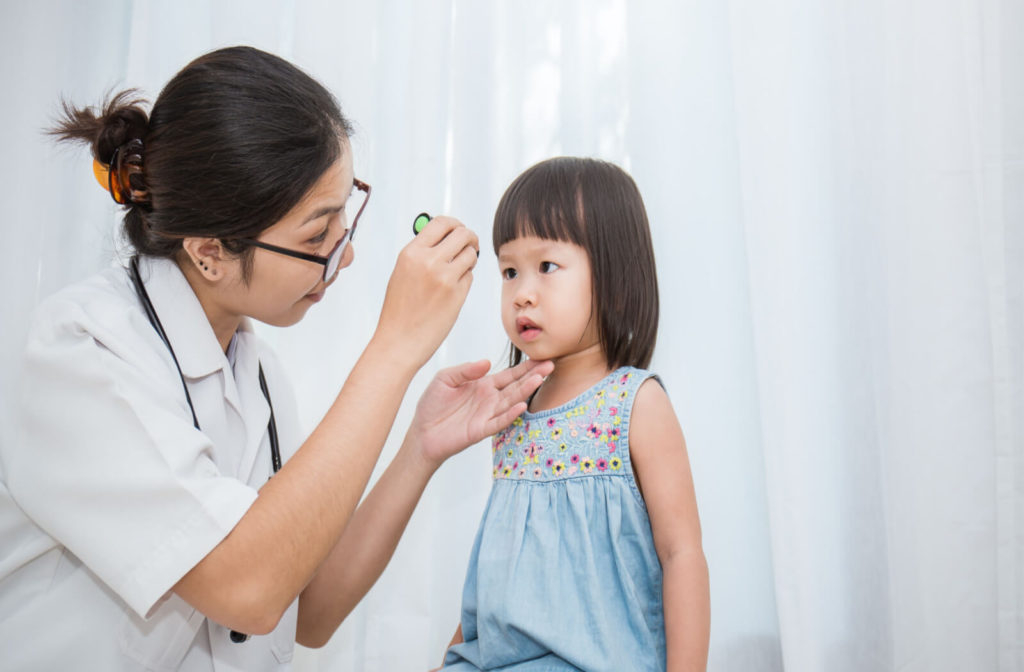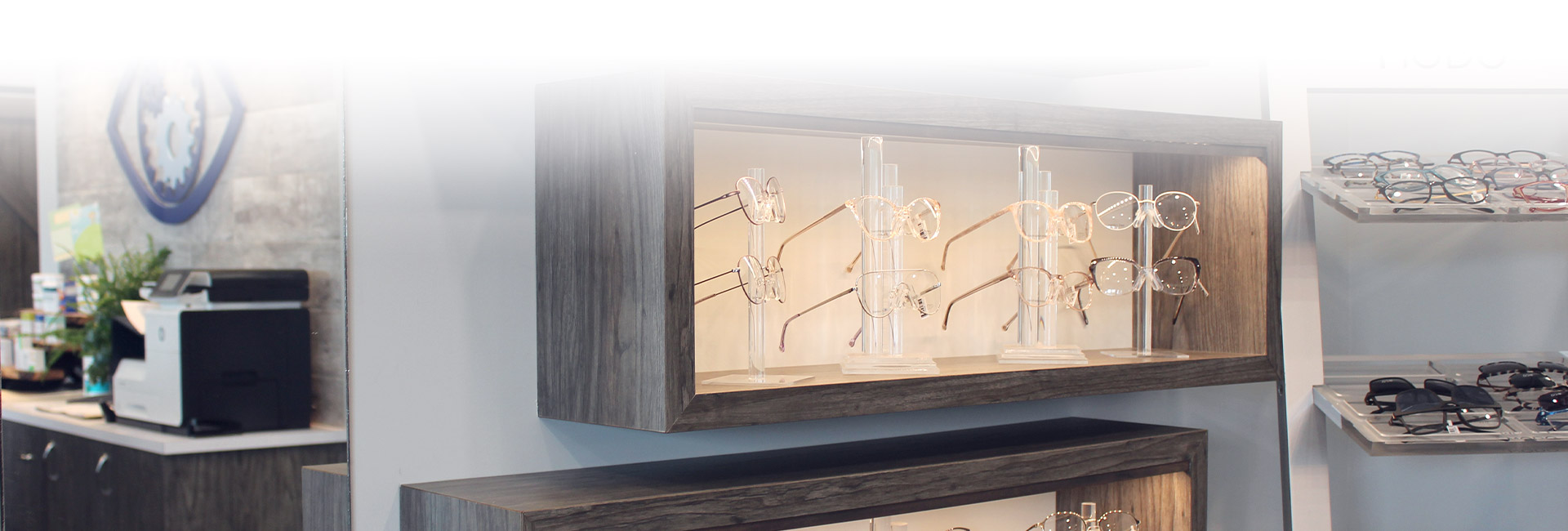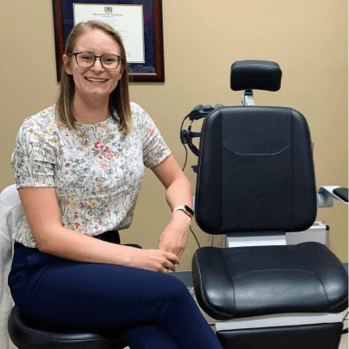Our visual system begins developing the moment we’re born and continues to develop throughout childhood.
Prescriptions for eyewear may not stabilize until a person reaches the age of 18. This means your vision can change over time and annual eye exams for children are critical to their development and eye health.
Many children have undiagnosed vision issues simply because they don’t know that their vision “isn’t supposed to look like that.” While they may see a blurrier version of the world from us, they don’t always have a frame of reference to realize that their vision isn’t as clear as it could be.
Does My Child Need Glasses?
Children can wear glasses for many reasons. It helps improve and strengthen their vision, can improve eye alignment, and protects their eyes and vision from external factors, like dust and debris.
Here are a few signs and symptoms that indicate your child may be experiencing vision problems and needs glasses:
- Squinting
- Tilting head or covering one eye
- Sitting too close to the television
- Rubbing eyes excessively
- Complaining of headaches or eye pain
- Having difficulty concentrating on school work
- Bringing objects very close to look at them
Even if your child isn’t complaining about their eyes or vision, it’s important to take them for annual eye exams. Sometimes, visual issues can go undetected without an eye exam. Additionally, eye exams allow your optometrist to provide the best course of treatment for your child’s ocular health and vision.
Many visual issues can be corrected with the proper eyewear. For example, myopia (nearsightedness) and hyperopia (farsightedness) are two common vision conditions that impact a child’s ability to see clearly depending on the distance.
Both of these refractive errors can be corrected with a proper prescription.
However, other conditions can affect your child’s vision even if their sight is 20/20 with both eyes. Amblyopia is a condition where one eye does not see nearly as well as the other, even when wearing glasses. This usually occurs due to abnormal visual development during childhood. The brain will then favour the stronger eye, which can cause vision in the weaker eye to get worse. Fortunately, with early treatment, many children can resolve issues caused by amblyopia.
Your child’s optometrist can use a variety of tests to help determine the best treatment for your child’s eyes and vision.

What Visual Skills Does My Child Need to Learn?
Every child needs the following visual skills for effective reading and learning:
- Visual acuity: the ability to see clearly in the distance for viewing the chalkboard, at an intermediate distance for the computer, & up close for reading a book
- Eye focusing: the ability to quickly & accurately maintain clear vision as the distance from objects changes, such as looking from the chalkboard to a paper on the desk
- Eye tracking: the ability to keep the eyes on target when looking from one object to another, such as moving the eyes along a printed page or following a moving object like a thrown ball
- Eye teaming: the ability to coordinate & point both eyes together when looking at an object & to be able to judge distances/depth for classwork and sports
- Hand-eye coordination: the ability to use visual information to guide body, head, and hand movements. This skill is used in writing/drawing and when trying to hit a ball
- Visual perception: the ability to recognize, organize, and respond to what is seen visually. It is used to organize images on a printed page into letters, words, & ideas, as well as to understand/remember what is read
Does My Child Need a Vision Screening or Exam?
Vision screenings are typically conducted by your child’s pediatrician or school. An optometrist conducts a comprehensive eye exam. An in-depth eye exam can help determine the root cause of their vision issues.
A comprehensive eye exam assesses visual acuity, or the clarity of vision, and may also check for:
- Strabismus (crossed eyes)
- Amblyopia (lazy eye)
- Eye alignment
- Depth perception
- Overall health of the eyes
- Indications of more serious eye conditions
Children should get an eye exam annually as their vision is continually changing. 80% of learning is visual, so ensuring your child can see clearly and comfortably is paramount to their academic success.
What Are My Next Steps?
The best thing you can do for your child is set up a comprehensive eye exam. Even if your child hasn’t failed any vision screenings, comprehensive eye exams are far more thorough and can give you and your child peace of mind. Book their appointment with us today!




